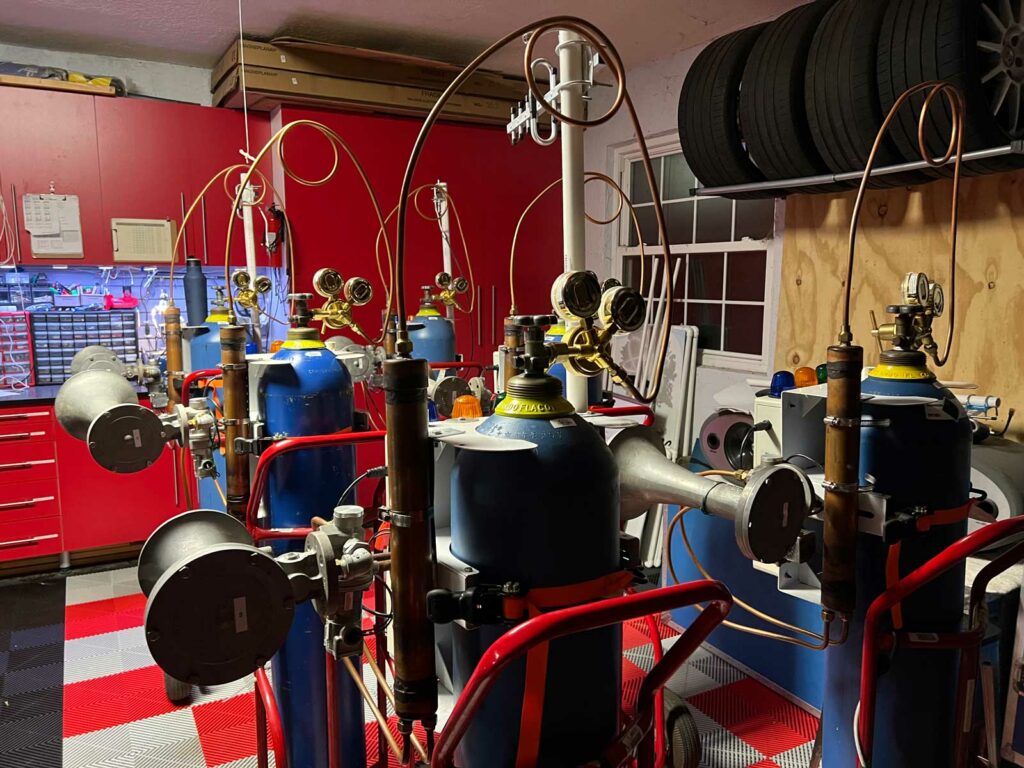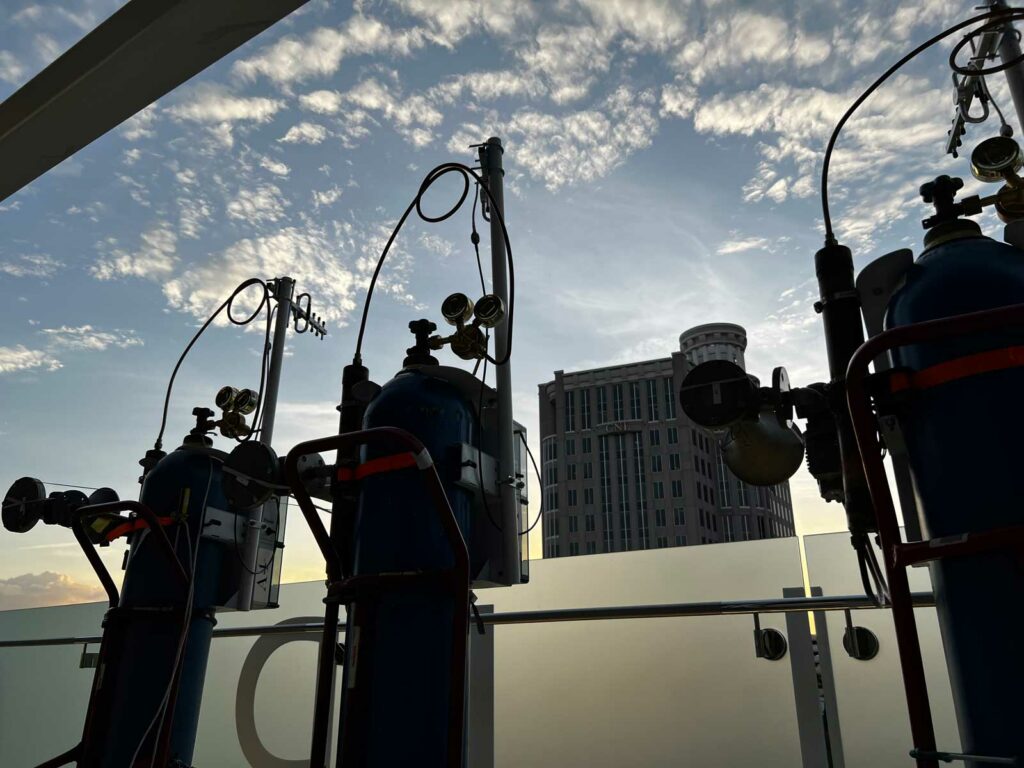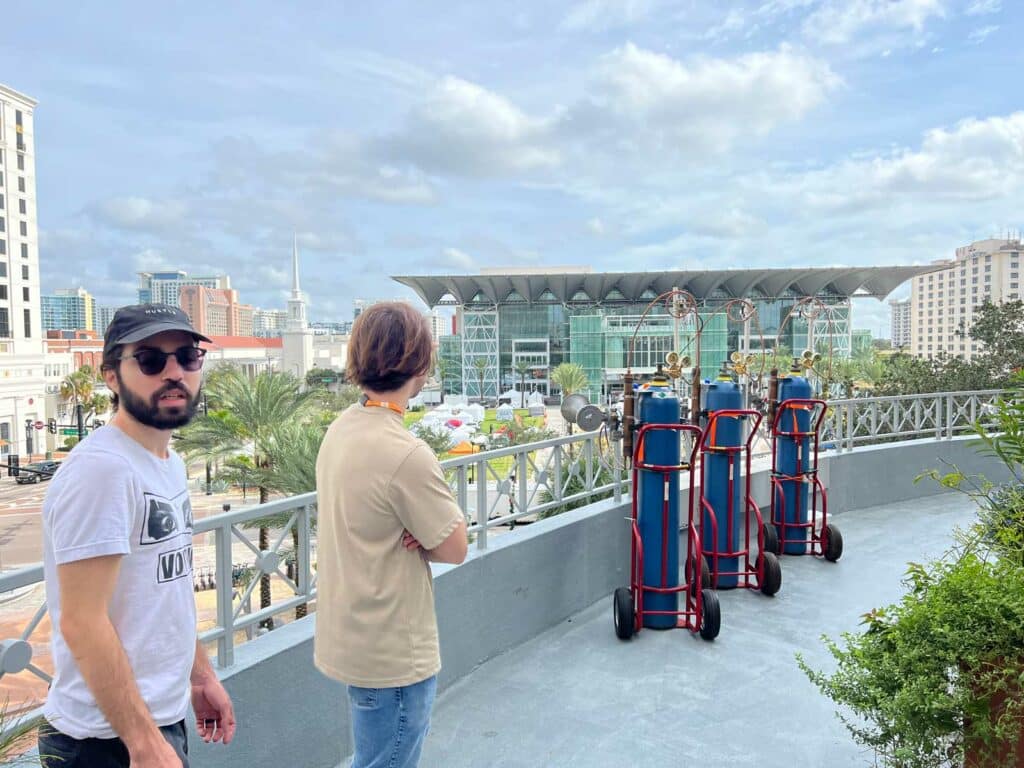welcome, new-music traveler
The “The Flower of Life” distance music installation concert invites audiences into a living architecture of sound and space. Drawing from the principles of distance music, Lay crafts an immersive experience that marries the physical laws of acoustics with the mystique of sacred geometry.
Words normally used to describe music events fail to describe Distance Music. They are a departure from the norm, resembling more of a massively multiplayer online role-playing game (MMORPG) than a standard composition. Through a meticulous arrangement of music location sources, Lay sets up a space-time environment where every audience member’s location creates unique timings and rhythms, akin to exploring different realms within a virtual world.

The title, “The Flower of Life,” refers to an iconic figure of seven circles from sacred geometry: esoteric knowledge from ancient times held to contain keys to understanding the universe. By embedding this figure into the concert’s design, Lay not only pays homage to this historical motif but also employs its ratios to dictate musical timing and interaction.
Tuned train horn and glockenspiel apparatuses weighing over 200 lbs, called “sounders,” will sit at the six flower tips on the central circle. When the custom-built onboard radio receiver detects its assigned pitches, it unleashes a staccato blast through the train horn or throws a piston to send the sparkling sound of the glockenspiel into the 8 acres of concert space. Exactly when you hear them depends on your distance from them and the speed of sound: 1145 feet per second @85˚F, hence the term “Distance Music.”
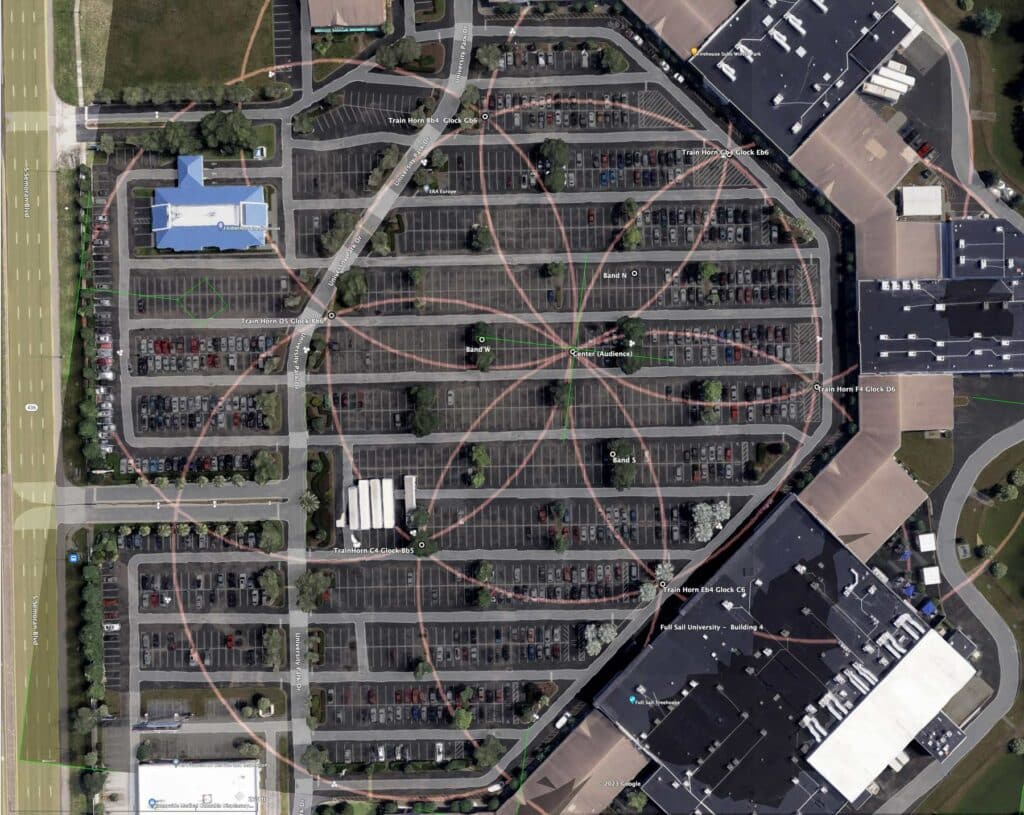
As the Brass Band of Central Florida’s 23 brass musicians, split into three synchronized groups, play in concert with the glockenspiels and train horns, the geometry comes alive—not just visually but sonically. Their melodic, harmonic, and dynamic music is composed with the sounders’ fixed, repetitive notes. Lights and haptics from custom-built radio-controlled metronomes keep the human conductors in time with the sounders and each other across long distances.
Listeners are encouraged to roam this vast musical landscape. By walking, attendees engage in a personal act of curation, their movements allowing them to experience varying rhythmic patterns that echo their position in the surrounding underlying geometry. If they stand in the center of the symmetrical Flower of Life, their position will render a metrically stable version of the composition. If they walk to stand in front of a band, they will hear the other two bands delayed by a factor of the golden ratio (1.618:1). However, as one moves towards the periphery, these rhythms stretch, expand, and reorder, offering a direct auditory analog to the visual and spatial distortions of sacred geometry.
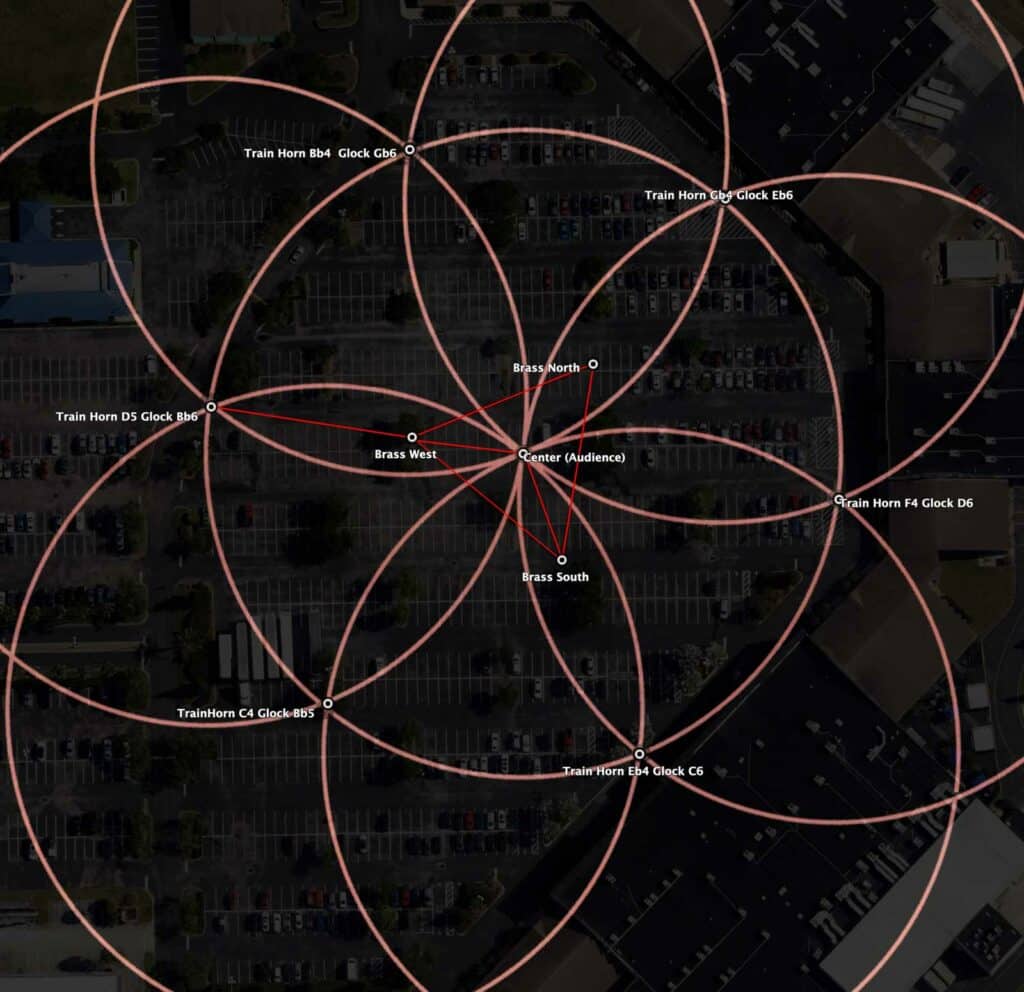
This is no ordinary concert. It’s an exploration, a game of musical and spatial discovery powered by cutting-edge technology and age-old mathematical principles. For the culturally curious and the sonically adventurous, this event promises to be a highlight of Central Florida’s artistic calendar. Join us at Full Sail University this June 15th, beginning at the 4E Treehouse at 7 pm, for an evening that redefines the boundaries of musical performance.
Time: 7:00PM
Ticket Price: FREE
Parking: FREE (in Full Sail Building 3 parking lot, a short walking distance just north adjacent of the event)
Learn more about Distance Music and how it works:
Location: Building 4 parking lot of Full Sail University in Winter Park, FL. 427 S Semoran Blvd, Winter Park 32792 Google Location
the brass band of Central Florida
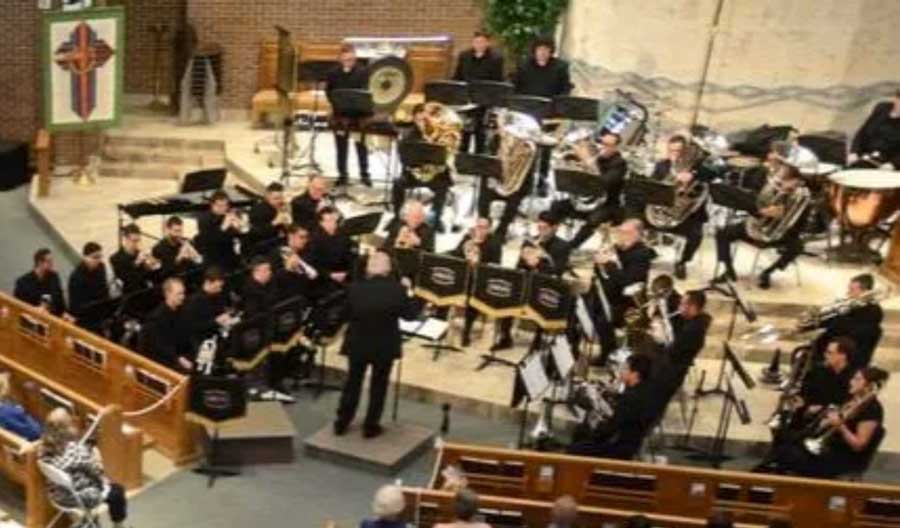
- The superb Brass Band of Central Florida, an English style brass band. BBCF has competed regularly in the Championship Section of the North American Brass Band Championships (NABBA) and the US Open, winning NABBA in 2005 and the US Open on 4 occasions.
They have also appeared once at the British Open Brass Band Championships and three times at the Brass in Concert Championship, gaining 2nd Prize in 2011.
This organization, led by Gareth Pritchard, has worked with composer Keith Lay in the past. They were the central force, along with a choir, led by Dr. Jeffrey Redding, and an African Drum trio from UF, premiering the Mode 0 Distance Music piece “FusionFest 2022 Opening Fanfare” at the Dr. Phillips Center for the Performing Arts.
Distance Music Tech:
A Distance Organ comprising of six Sounder apparatuses.
Each apparatus is built on a wheeled cylinder dolly and houses one pitch of a Nathan AirChime train horn and, new for this event, one bar of an antique Leedy orchestral glockenspiel (thanks go to Mark Goldberg, percussionist with the Orlando Philharmonic Orchestra, who is loaning me the needed bars).
Each sounder is over 9 feet tall and weighs over 200 lbs
Train Horns are powered by 304 cu. feet of Breathable Air (80/20 N2/O2) stored in a steel cylinder at 2500 psi
After being regulated to 75psi, gas is allowed to enter and sound the train horn through a Parker Pneumatics N-Poppet solenoid valve.
The glockenspiel is fastened to the apparatus with a 3D printed frame and sounded by the piston of a push/pull solenoid tipped with a brass ball.
Both of the solenoids and the telemetry circuitry are powered by a 12v lithium-ion battery
The custom-designed Pribusin Telemetry for each sounder uses an ISM band of digital radio, transmitted from a master radio mounted in the composer’s backpack, also powered by a Lithium-Ion battery. The system boasts a 2 mile range and responds in 10 milliseconds or less.
A hex code is broadcast by the composer containing all ON/OFF instruction data for the radios in real time.
That code enters the radio via USB from a Mac laptop containing two applications: Logic Pro notation and Max8. At the concert, the laptop, with the Logic sequence plays the data to Max through an internal bus. Max programming interprets the MIDI and converts it into serial data instructions for the remote radio receivers.
The music sequence is composed in Dorico Pro which realizes playback through NotePerformer/VSL and a home-built Unity game environment by Christopher Lay to allow the design, testing and play-through of sounder placements.
Sounders and musicians are accurately placed at the concert location using Trimble Catalyst DA2 GPS/GNSS hardware and software using latitude and longitude numbers from the design stage using a Unity-based simulation application created by Christopher Lay.
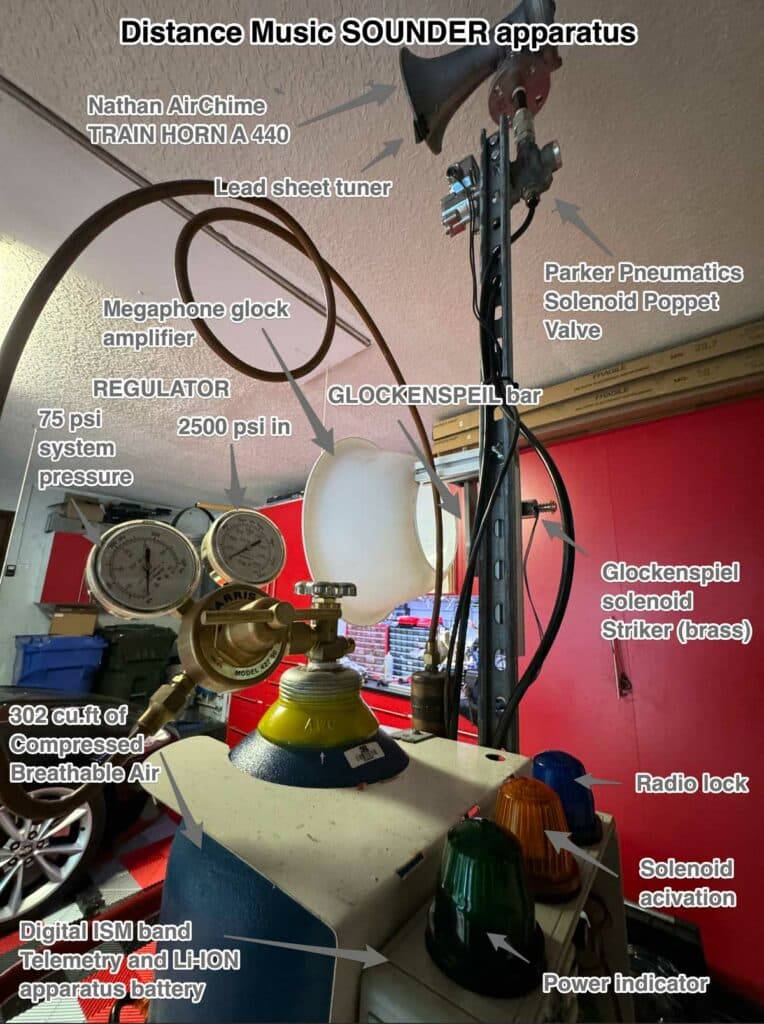
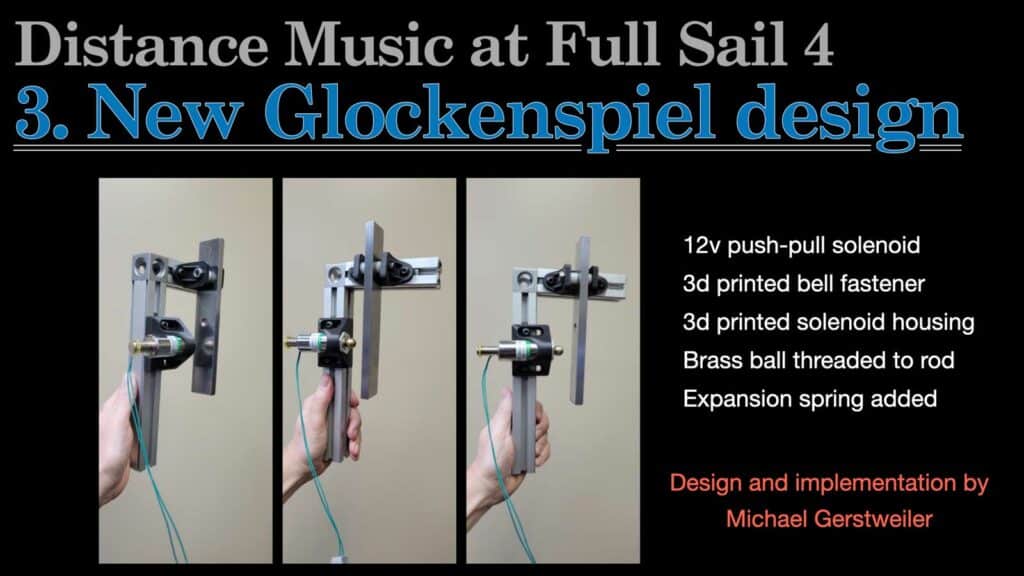
How to make sense of these videos: The white guy with big ears is you, the Listener. This Unity game engine software you’re seeing simulates what the sound/music will be if all of the horns (the colored downward pointing cones) play at the same moment. The horns are set upon intersection points of multiple sets of concentric circles. When activated, each horn emits a dim, quickly expanding circular sound wave moving at the speed of sound (according to the desired temperature). When each horn sound wave passes the Listener, you hear a sample of the train horn note.
- — 00:00 DM1, built on 2 circle-sets with 112.8ft as the first radius and Primary Interval (PI). Train Horns C4, Eb, F, Gb, A, Bb, D Interesting rhythms here, but, would be difficult for musicians to play to.
- 01:07 DM2, 2 circle-sets, with a larger 174.91ft Primary Interval (PI). Tried to get a large hemisphere shaped array with a center point that would allow a Listener to hear every horn that fires simultaneously. However, outside that center point, the rhythms are again, too complex to play in sync with.
- 01:49 DM3 Two circle-sets with a125ft PI. Another attempt at a useable hemispherical array of sounders. Same issues as DM2
- 02:33 DM4 The most attractive yet. Two circle-sets of 125ft PI, but placing the sounders on various PI points of intersection (I call these primary interval points or PIPs). Lots of common distances that are in simple ratios – which translates into METER.
- 03:25 DM5 Also attractive. Like DM4 except for different choices of PIPs and some pitch changes: Eb is now E. Bb is now B.
Lorem ipsum dolor sit amet, consectetur adipiscing elit. Ut elit tellus, luctus nec ullamcorper mattis, pulvinar dapibus leo.

